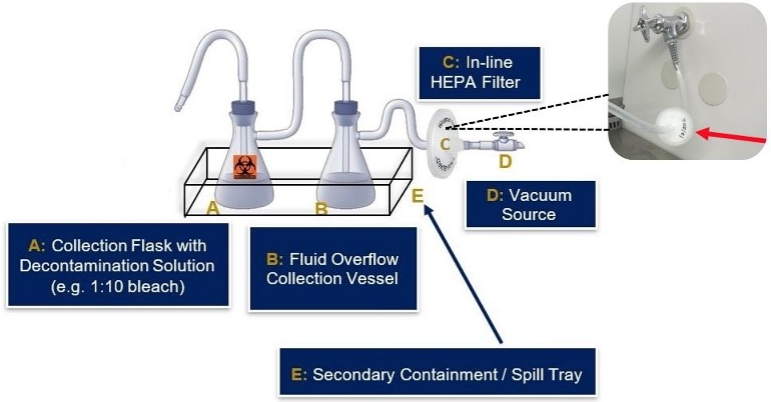 The EHSO Research Safety team wants to acknowledge and thank all lab personnel and principal investigators for your hard work and efforts during this year’s laboratory assessments (inspections). It is our goal to ensure that everyone works safely in their labs and remains in regulatory compliance. Your continued efforts are improving the culture of safety in Emory’s research laboratories.
The EHSO Research Safety team wants to acknowledge and thank all lab personnel and principal investigators for your hard work and efforts during this year’s laboratory assessments (inspections). It is our goal to ensure that everyone works safely in their labs and remains in regulatory compliance. Your continued efforts are improving the culture of safety in Emory’s research laboratories.
Keep up the great work!
| Finding |
Most Common Correction |
| Secondary chemical containers are not labeled legibly, in English, with full chemical name and associated hazard(s) |
Do not use abbreviations – use full chemical name.
Label hazard(s) using GHS pictogram or text description of hazard (e.g. “flammable,” “corrosive,” etc.). |
| Lab signage is posted and up-to-date |
Submit a Lab Signage Requirements Form when emergency contacts need to be updated. |
| Written Standard Operating Procedures (SOPs) are not available for Particularly Hazardous Substances, Biological Agents, and/or Laser Devices/Systems |
Ensure the lab has documented SOPs for:
– Particularly Hazardous Substances.
– Biological Agents (Biosafety SOP).
– Laser Devices/Systems.
Ensure lab members who work with these hazards have reviewed and signed the SOPs.
Best practice is to review laboratory SOPs annually.
|
| Chemical waste is not maintained according to Emory’s Chemical Waste Guidelines |
EHSO Hazardous Waste Label must be completed when the first drop/piece of waste is added to the container (start of generation).
All waste containers must be covered, unless actively adding to it.
Liquid waste containers are stored in secondary containment.
Empty chemical containers have been triple-rinsed, labels defaced, and caps removed prior to disposal.
|
| House vacuum lines are not protected from laboratory processes that might allow fumes and/or fluids into the system |
Ensure in-line HEPA filters are installed on aspiration systems.
Ensure adequate bleach has been added to collection container (pink media = NOT enough bleach).
 (Click image to enlarge) (Click image to enlarge)
|
| Chemical inventory is not segregated and/or stored by hazard class |
Use GHS classification to determine hazard class.
Segregate and store chemicals based on hazard class.
Use secondary containment to separate different hazard classes stored on the same shelf.
Store corrosive and toxic chemicals on lower lab shelves (best if at or below eye level).
|
This entry was posted in EHSO and tagged lab rat, lab safety, Principal Investigator, research lab safety. Bookmark the
permalink. Trackbacks are closed, but you can .
 The EHSO Research Safety team wants to acknowledge and thank all lab personnel and principal investigators for your hard work and efforts during this year’s laboratory assessments (inspections). It is our goal to ensure that everyone works safely in their labs and remains in regulatory compliance. Your continued efforts are improving the culture of safety in Emory’s research laboratories.
The EHSO Research Safety team wants to acknowledge and thank all lab personnel and principal investigators for your hard work and efforts during this year’s laboratory assessments (inspections). It is our goal to ensure that everyone works safely in their labs and remains in regulatory compliance. Your continued efforts are improving the culture of safety in Emory’s research laboratories. 
